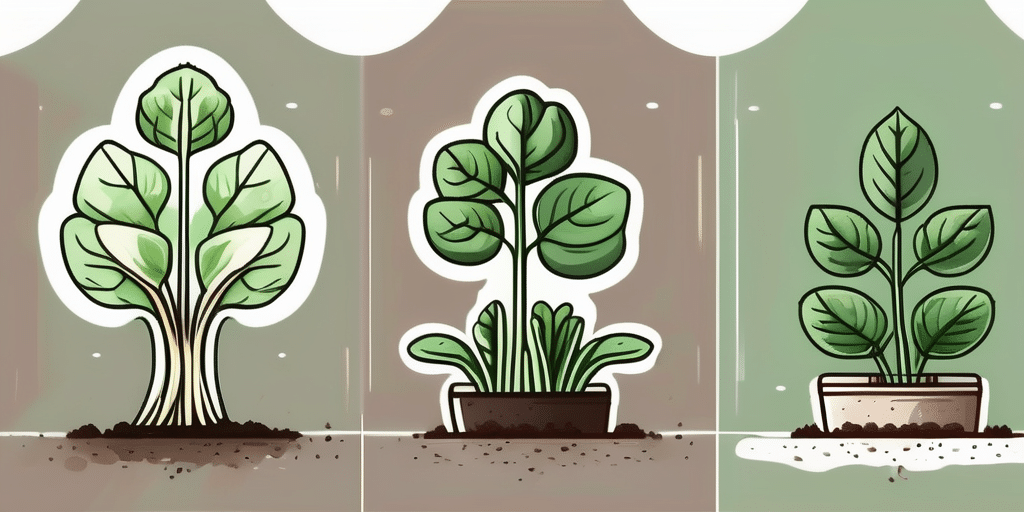Green Malabar spinach, known scientifically as Basella alba, is a popular leafy green vegetable that’s not only nutritious but also quite easy to grow. This tropical vine thrives in warm climates and is known for its heart-shaped leaves and its ability to climb high. One of the key aspects of growing healthy Malabar spinach is understanding how to water it properly. In this guide, we will delve into the details of watering this plant to ensure it thrives in your garden.
Understanding Green Malabar Spinach
Before we get into the specifics of watering, it’s important to understand the nature of Green Malabar spinach. This plant, native to tropical Asia, is a fast-growing vine that can reach up to 30 feet in length. It prefers warm temperatures and high humidity, which is why it’s often found in regions with tropical climates.
Despite its name, Malabar spinach is not a true spinach. It belongs to the Basellaceae family, which is different from the family of traditional spinach (Amaranthaceae). However, its leaves have a similar taste and texture to spinach, hence the name.
Soil Requirements
Green Malabar spinach prefers well-draining soil. It can tolerate a wide range of soil types, from sandy to loamy to clay, as long as the soil drains well. The plant also prefers a slightly acidic to neutral pH, between 6.5 and 7.5.
According to the USDA Natural Resources Conservation Service, proper soil management is crucial for the growth of any plant, including Green Malabar spinach. Therefore, before planting, it’s advisable to amend the soil with organic matter such as compost or well-rotted manure to improve its fertility and drainage.
Watering Green Malabar Spinach
Now that we understand the nature and soil requirements of Green Malabar spinach, let’s dive into the main topic of discussion – how to water this plant.
Watering is an essential part of plant care, and Green Malabar spinach is no exception. However, the amount and frequency of watering can vary depending on several factors such as the plant’s growth stage, the weather, and the soil type.
Watering Seedlings
When you first plant your Green Malabar spinach seeds, they will need consistent moisture to germinate. Water the soil thoroughly after planting the seeds, and then keep the soil evenly moist until the seeds sprout. However, be careful not to overwater, as this can cause the seeds to rot.
According to the University of Minnesota Extension, seedlings require careful watering to prevent them from drying out or becoming waterlogged. Therefore, it’s advisable to water the seedlings lightly but frequently, ensuring the soil remains moist but not soggy.
Watering Mature Plants
Once your Green Malabar spinach plants are established, they will be more tolerant of varying water conditions. However, they still prefer consistent moisture, especially during dry periods.
As a rule of thumb, water your Green Malabar spinach plants deeply once or twice a week, allowing the soil to dry out slightly between waterings. This deep watering encourages the roots to grow deeper into the soil, making the plants more drought-tolerant.
However, remember that these are just guidelines, and the actual watering needs can vary depending on the weather and the soil type. For instance, during hot, dry weather, you may need to water more frequently. On the other hand, if you have heavy clay soil that retains water, you may need to water less often.
Signs of Overwatering and Underwatering
Just like any other plant, Green Malabar spinach can show signs of stress if it’s overwatered or underwatered. Recognizing these signs early can help you adjust your watering schedule to prevent further damage.
Signs of Overwatering
Overwatering is a common mistake among gardeners, and it can lead to various problems such as root rot and fungal diseases. Signs of overwatering in Green Malabar spinach include yellowing leaves, wilting despite the soil being wet, and a general decline in plant health.
If you notice these signs, reduce your watering frequency and ensure the soil has proper drainage. According to the Oregon State University Extension Service, overwatering can be just as harmful as underwatering, so it’s important to strike a balance.
Signs of Underwatering
On the other hand, underwatering can cause the plants to become stressed and wilted. Signs of underwatering include dry, brittle leaves, slow growth, and wilting during the hottest part of the day.
If your plants show signs of underwatering, increase your watering frequency and ensure the water penetrates deeply into the soil. However, be careful not to overcompensate and overwater the plants.
Conclusion
Watering Green Malabar spinach properly is crucial for its growth and productivity. By understanding the plant’s watering needs at different stages of growth and recognizing the signs of overwatering and underwatering, you can ensure your plants remain healthy and productive.
Remember, the key to successful watering is balance. Too much water can be just as harmful as too little. Therefore, monitor your plants closely, adjust your watering schedule as needed, and enjoy the lush, leafy growth of your Green Malabar spinach.
Join Our Green Thumb Community!
Ready to take your gardening skills to the next level? Subscribe for free to How to Grow Everything and learn how to build the garden of your dreams! Receive personalized gardening advice tailored to your location, grow zone, and experience level. With our family’s commitment to providing the best gardening tips without any spam, you’ll only get the most valuable insights and special offers. Join thousands of others and transform your gardening knowledge into lush, thriving gardens. It’s 100% free – from our family to yours.






